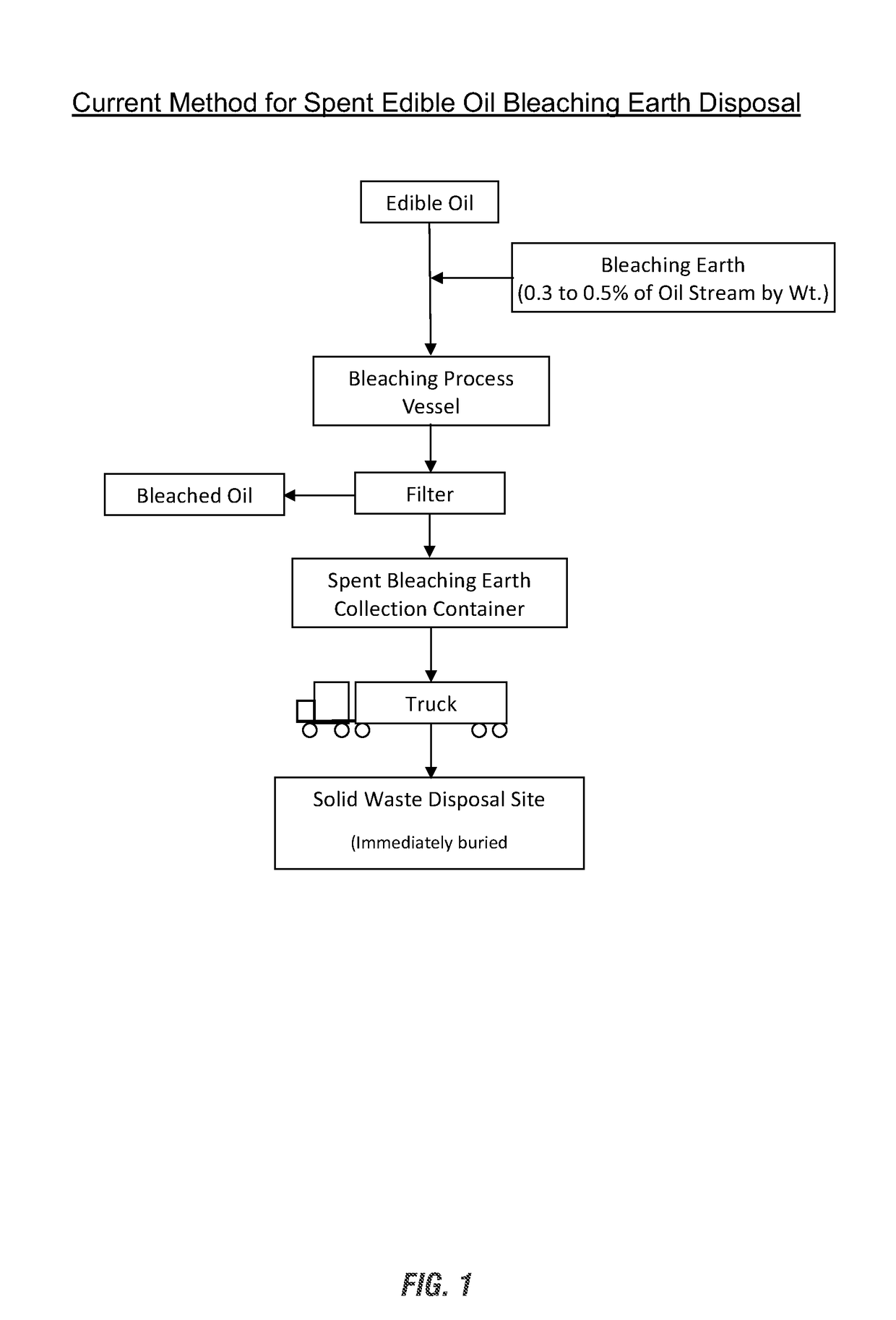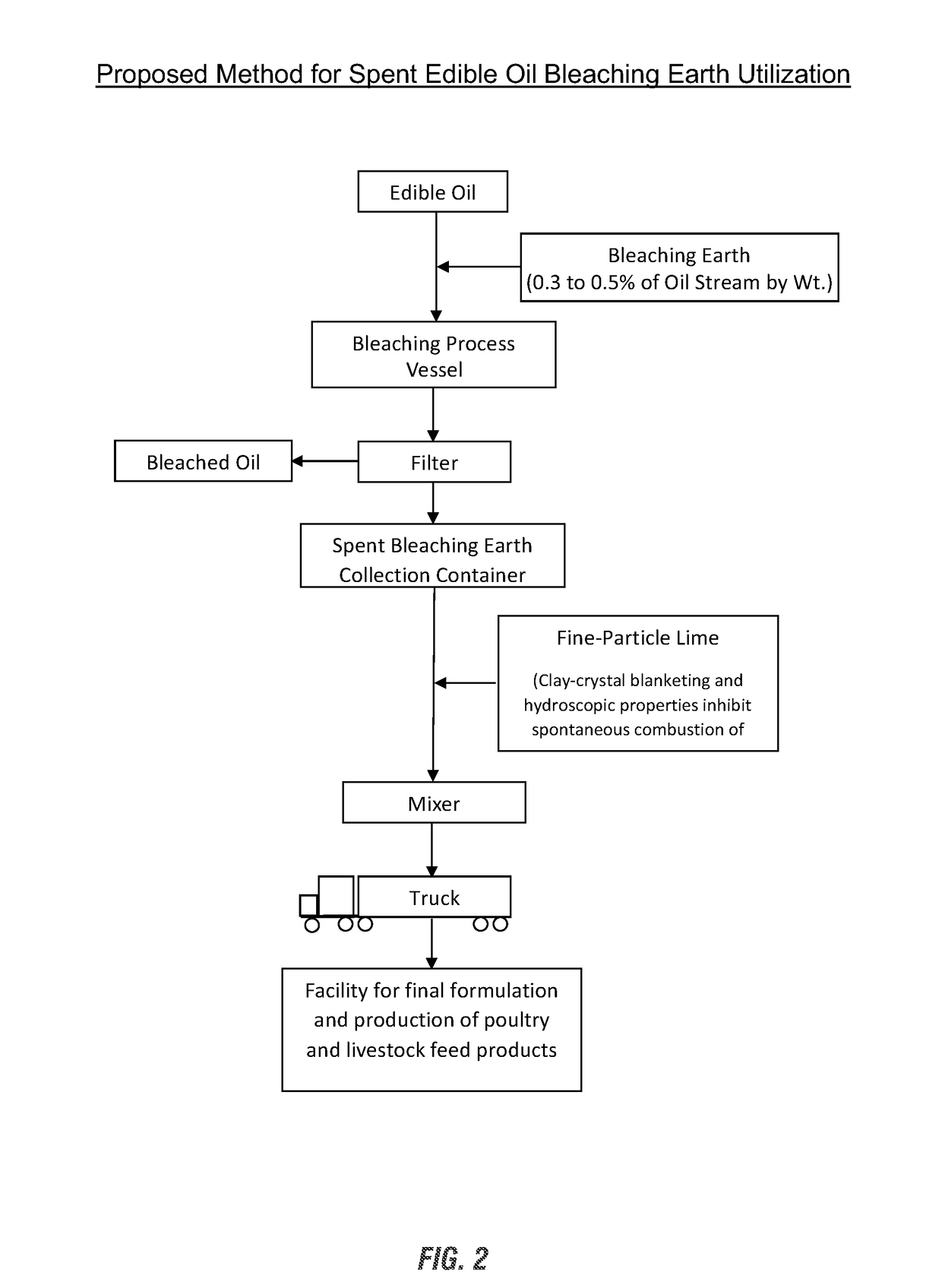Use of edible-oil-processing spent bleaching earth in formulating poultry and livestock feed products
- Summary
- Abstract
- Description
- Claims
- Application Information
AI Technical Summary
Benefits of technology
Problems solved by technology
Method used
Image
Examples
example 1
Spontaneous Combustion Suppression Tests
[0043]Spontaneous combustion suppression tests were conducted to ensure that the hazards associated with the combustion of spent bleaching earth were eliminated. The tests were conducted as discussed below and the data from the tests is contained in Tables 2 and 3.
[0044]Five pound samples of spent bleaching earth containing about 30% oil by weight were mixed with the fine-particle lime component as presented in Table 3, and under the procedures described below.
TABLE 2Spontaneous Combustion Suppression Test FormulationsAmount of SpentWeight PercentageLime (CalciumBleaching Earthof Lime (CalciumCarbonate)(Pounds)carbonate)Physical Properties50 (Reference)None55Dry Fine-Particle56Dry Fine-Particle57Dry Fine-Particle58Dry Fine-Particle
[0045]All of the five-pound samples were placed outside on a gravel roadway in the direct sunlight for five days. To retain the heat produced from oil oxidation and protect the samples from moisture, the sample bags ...
example 2
Formulation of Poultry Feed Product for Test
[0051]The test ingredient made from mixing spent bleaching earth (SBE) with lime was used to make a poultry feed for trial using the following formulation:
Component%SBE and lime ingredient20Alfalfa meal35Ground corn35Oats10TOTAL100
The product was successfully fed to layer hens for three months.
PUM
 Login to View More
Login to View More Abstract
Description
Claims
Application Information
 Login to View More
Login to View More - R&D
- Intellectual Property
- Life Sciences
- Materials
- Tech Scout
- Unparalleled Data Quality
- Higher Quality Content
- 60% Fewer Hallucinations
Browse by: Latest US Patents, China's latest patents, Technical Efficacy Thesaurus, Application Domain, Technology Topic, Popular Technical Reports.
© 2025 PatSnap. All rights reserved.Legal|Privacy policy|Modern Slavery Act Transparency Statement|Sitemap|About US| Contact US: help@patsnap.com



